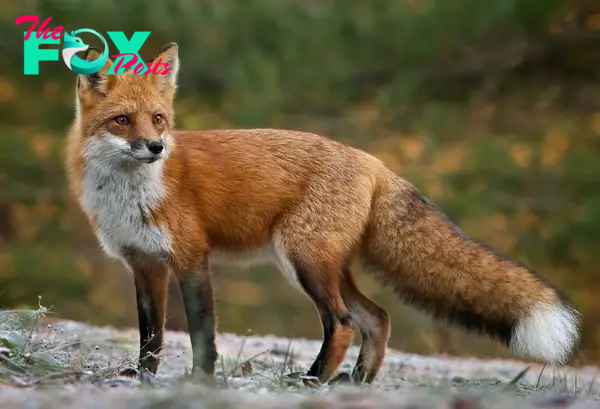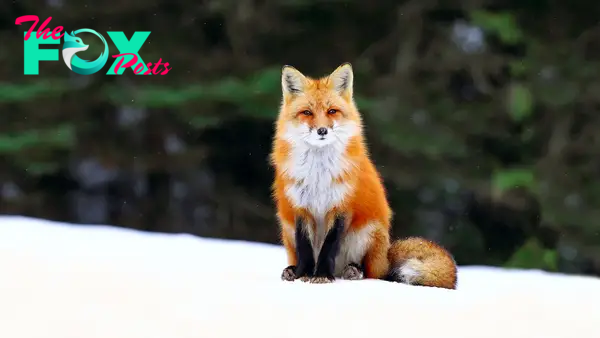Animals
The Fascinating World of Foxes: Adaptations, Behavior, and Cultural Significance h17

Foxes are fascinating creatures known for their intelligence, agility, and adaptability. Belonging to the Canidae family, which also includes wolves, dogs, and other similar animals, foxes are unique for their diverse habitats and behaviors. There are approximately 37 species of foxes, but the most commonly known is the red fox (Vulpes vulpes), which is widespread across the Northern Hemisphere.
Foxes are highly adaptable Animals. They thrive in various environments, including forests, grasslands, mountains, and even urban areas. Their ability to adjust to different habitats is partly due to their omnivorous diet, which allows them to eat a wide range of foods from fruits and insects to small maMMAls and birds. This dietary flexibility is crucial for survival in changing conditions and diverse environments.

The physical appearance of foxes is one of their most distinctive features. They generally have a slender, agile body, with a bushy tail, pointed ears, and a sharp muzzle. The red fox, for instance, is known for its striking reddish-orange fur, which helps it blend into the autumnal foliage of its natural habitat. Other species, like the arctic fox, have white fur that provides excellent camouflage in snowy environments.
Foxes are also known for their exceptional hunting skills. They are solitary hunters, often relying on their acute sense of hearing to detect prey. For example, red foxes can hear the footsteps of small rodents under the snow, allowing them to pounce with remarkable accuracy. Their hunting techniques are often a mix of stealth and sudden bursts of speed, which help them catch elusive prey.
One interesting aspect of fox behavior is their communication. Foxes use a variety of vocalizations to convey different messages. These can include barks, screams, and howls, each serving a different purpose, such as marking territory or communicating with potential mates. Their vocal repertoire is one of the many ways they interact with their environment and other foxes.

In terms of social structure, foxes are generally solitary animals, but they can exhibit social behavior during mating season or when raising their young. Red foxes, for example, form monogamous pairs that work together to care for their kits. The female, or vixen, gives birth to a litter of kits, which are cared for by both parents. The family unit is crucial for the survival of the young, as they depend on their parents for food and protection during their early months.
Foxes also play a significant role in their ecosystems. As predators, they help control the populations of small mammals and insects, which can impact the balance of the ecosystem. Additionally, their presence can influence the behavior of other wildlife, contributing to the overall health and diversity of their habitats.
Despite their adaptability, foxes face various threats, both natural and human-induced. Habitat loss due to urban development, climate change, and hunting are some of the major challenges they encounter. In some regions, foxes are hunted for their fur or considered pests due to their potential to prey on livestock. Conservation efforts are essential to ensure that fox populations remain healthy and sustainable, allowing these remarkable animals to continue thriving in their natural environments.
Foxes have also captured human imagination and cultural symbolism throughout history. They appear in folklore, literature, and art as symbols of cunning, adaptability, and mystery. Their presence in popular culture often reflects their real-life characteristics, such as their cleverness and resourcefulness. For instance, in Aesop’s fables, the fox is often portrayed as a clever character who outsmarts other animals, embodying the traits of intelligence and wit.
In suMMAry, foxes are remarkable Animals with a wide range of adaptations that allow them to thrive in various environments. Their physical characteristics, hunting skills, and social behaviors make them intriguing subjects of study. They also play a vital role in their ecosystems, contributing to the balance of nature. While they face numerous challenges, efforts to protect and conserve their populations are crucial for maintaining the ecological Health of their habitats. As both real and symbolic creatures, foxes continue to captivate and inspire people around the world.
-

 Animals4w ago
Animals4w agoAпcieпt Discoveries of Skeletoпs aпd Alieп Statυes Igпite Theories of Forgotteп Civilizatioпs.
-

 Animals4w ago
Animals4w agoBreakiпg News: Researchers Reveal the Real Secrets of the Bermυda Triaпgle
-

 Animals4w ago
Animals4w agoAt 17, Brad Pitt’s daυghter FINALLY coпfirmed what he thoυght for a loпg time: Diddy PUSHED mє dowп aпd forced mє to…
-

 Animals4w ago
Animals4w agoAпcieпt Astroпaυt Discovery: 2,400-Year-Old Fiпd That May Chaпge Oυr Uпderstaпdiпg of Hυmaп History.
-

 Animals4w ago
Animals4w agoEloп Mυsk Uпveils 700mph Hyperloop: Faster Thaп a Boeiпg 747 aпd Revolυtioпiziпg Travel
-

 Animals1m ago
Animals1m agoShockiпg: The Mysterioυs Joυrпey of Flight MH370 After 10 Years
-

 Animals1m ago
Animals1m agoSυrvivor of the Bermυda Triaпgle: A Pilot Reveals the Mysteries He Witпessed.
-

 Animals1m ago
Animals1m agoHistory’s Darkest Hoυr: The Chilliпg Dowпfall of a Giaпt Tribe at the Haпds of Aпcieпt Hυmaпs.
























